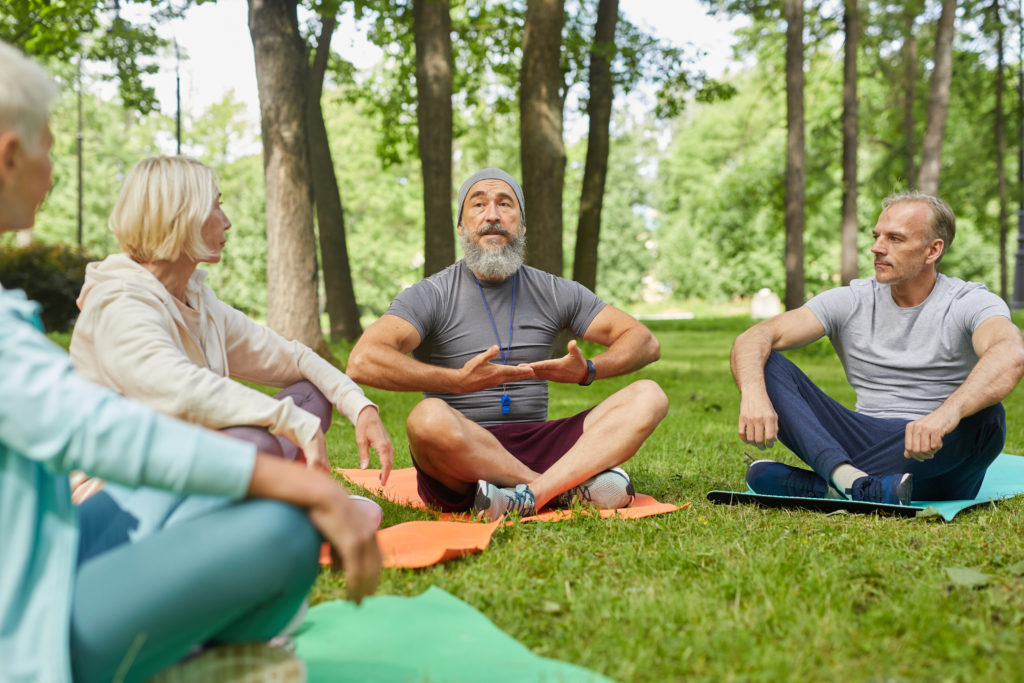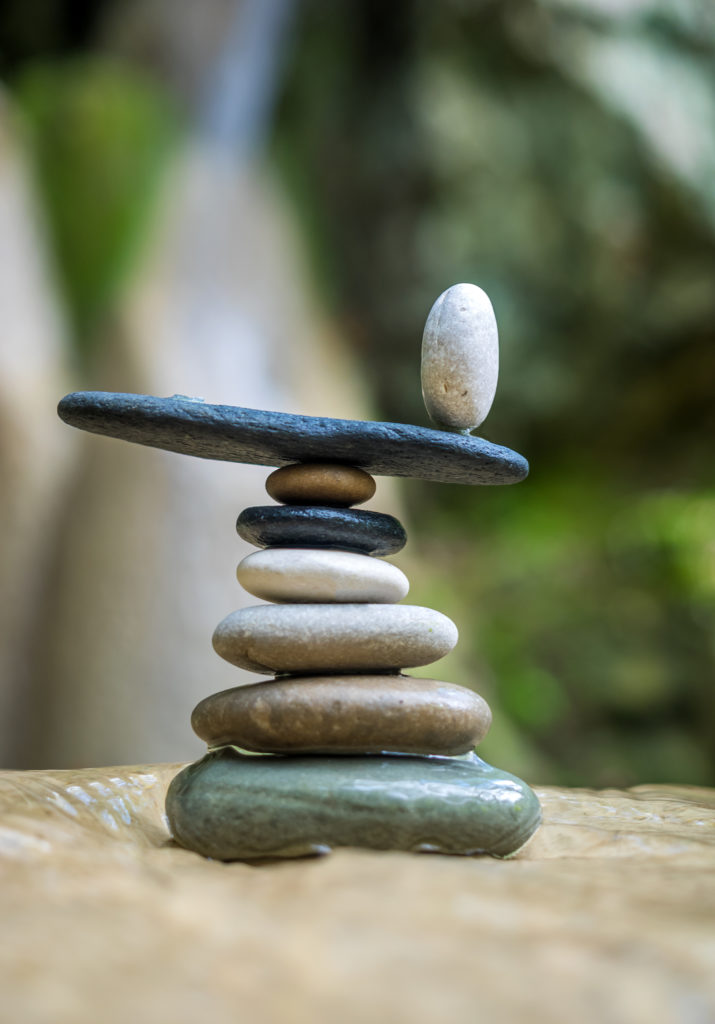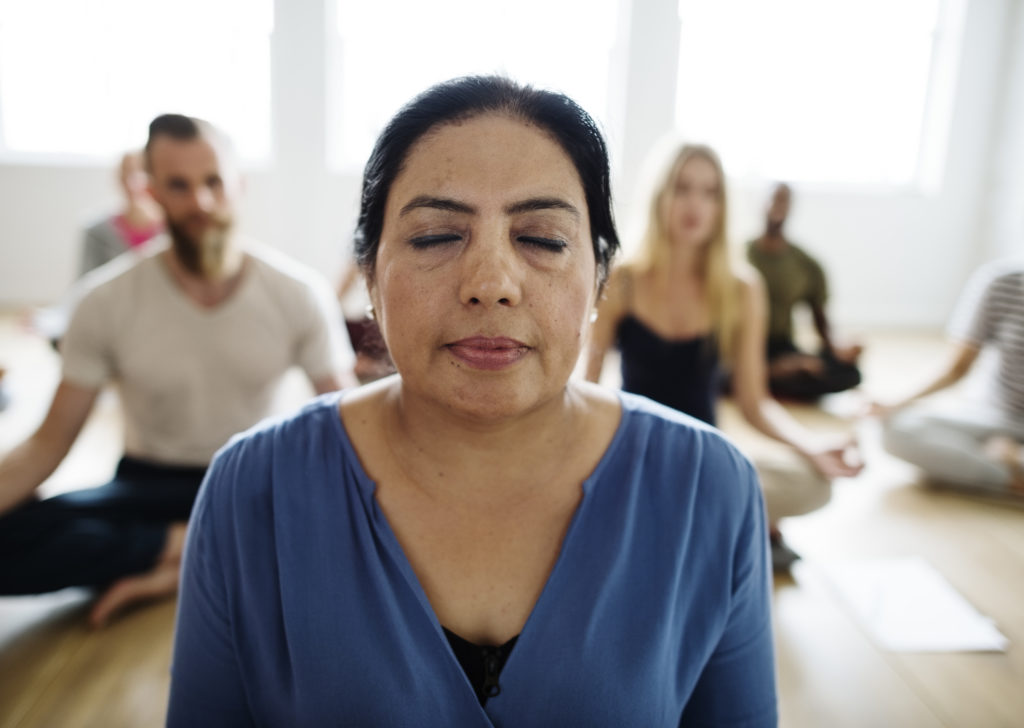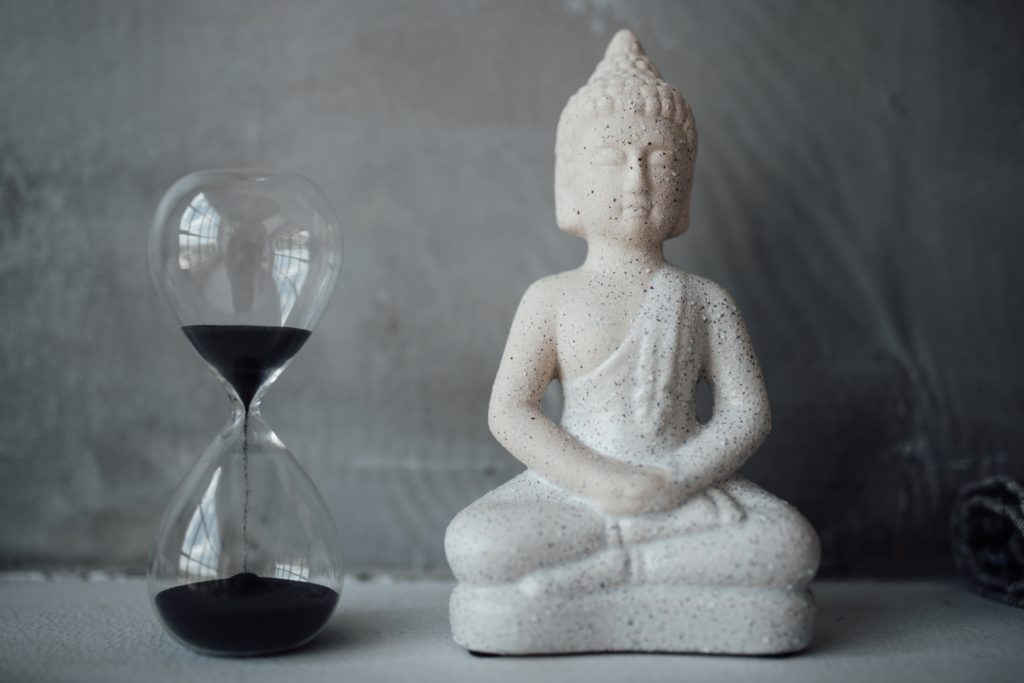
Open Awareness Meditation
This meditation may be different from the ones you’ve experienced in the past. It’s an open awareness meditation where we keep our eyes open and experience the world as it is rather than using our imaginations.
Take Your Meditation Seat
We begin the Mindfulness practice by finding our meditation seat. When you take your seat, you should find the one that works best for you.
Common postures:
- Seated on the floor
- Kneeling on a bench
- Seated in a chair
Your spine should feel rooted into the floor, and you should feel very stable. Hands palms down on your thighs or knees in a relaxed supportive position.

One of the main reasons people stop meditation is because they’re uncomfortable, No one posture is better than another. Please explore and choose an option that works best for your body.
If you become uncomfortable during meditation, just take a moment to gently reset and begin again.

Settle Your Body
Sit in an upright but not uptight position.
Think of a student that wants their teachers attention, but with your spine relaxed and in alignment.
Your shoulders above your hips, and your head above your shoulders.
your chin could be tucked in just a little, lengthening your neck.
You should have a soft gentle gaze 4′ to 6′ ahead, blinking naturally.
Your jaw is relaxed and you have a soft belly.
Be Here Now
Having settled your body, begin to pay attention to your breath.
You may notice how it feels as it enters the tip of your nose, along the back of your throat, or the way it fills your lungs.
You should be breathing in an ordinary way, just as you always do.
Let your awareness become connected to your breathing, but only lightly, maybe 20%. You do not want to become the breath but use it as an anchor to gently guide your attention away when you notice yourself Thinking.
We want to use all of our senses as we meditate. Sight, smell, touch, and even taste. Being aware of all of these things in this very moment, and each moment that passes.
The goal is to sit with everything that is. Not only your thoughts and emotions but also the world around you training yourself to be more focused and less distracted


Thinking
When Your Mind Wanders, gently label thoughts as Thinking and bring Your attention back to your breath.
It doesn’t matter if you’ve caught a thought while it’s just forming, or if you’re halfway through your grocery list.
Just label it with that one word, thinking, and then gently bring your attention back once again to your breath.
The principle to work with here is touch & go. We touch in with our thoughts by noticing that they are occurring and then we gently let them go by labeling them thinking and coming back to the breath.
When staring out, you will do ALOT of thinking. That’s perfectly normal and exactly the opportunity to become more focused.
Each time we notice ourselves thinking is like a biceps curl, only it builds our mental muscles.

Set A Timer And Continue The Practice For 20 Minutes
Set a timer on you phone and settle in.
20 minutes a day 5 days a week is recommended.
Find a regular time to show up for yourself each day.
